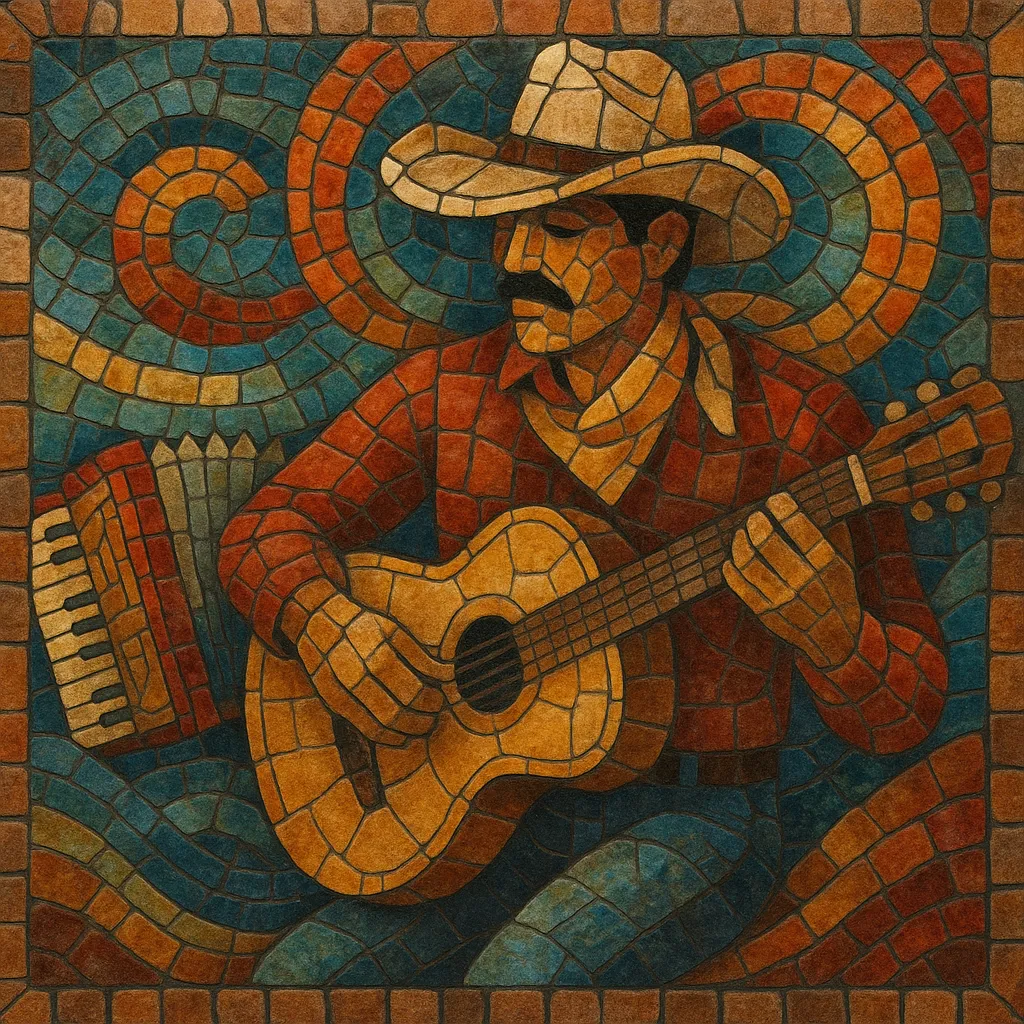
Latin country is a fusion of Nashville-rooted country music with Latin American and U.S.–Mexico border traditions. It blends country instrumentation—acoustic and electric guitars, pedal steel, fiddle, bass, and drums—with Tex‑Mex and regional Mexican colors such as accordion, bajo sexto, and polka or ranchera rhythms.
Vocals often switch between English and Spanish, and the songwriting retains country’s storytelling and heart‑on‑sleeve themes while referencing border life, migration, family, faith, and dancehall romance. Sonically, it can move from two‑step shuffles and honky‑tonk swing to norteño‑style polkas and tender waltzes, all while keeping country’s melodic simplicity and hook‑forward choruses.
Country and Latin sounds have intersected since mid‑century, especially along the Texas–Mexico border. Western swing, honky‑tonk, and border music shared dance‑hall spaces, repertoire, and instrumentation (guitars, fiddles, accordions). Songs such as Marty Robbins’ "El Paso" popularized Mexican motifs in country storytelling, foreshadowing a more formal hybrid.
The genre took a recognizable shape in the 1970s when Mexican‑American artists entered country’s mainstream. Johnny Rodriguez became one of the first Latino country stars, singing bilingually on charting singles. Freddy Fender’s bilingual hits—most famously "Before the Next Teardrop Falls"—brought Tex‑Mex phrasing, accordion colors, and Spanish choruses to country radio without losing classic Nashville song craft.
In the 1990s, bilingual and borderland fusions matured. The Mavericks, led by Raul Malo, folded bolero and Latin rhythms into country and rockabilly frameworks. Texas Tornados (Freddy Fender, Flaco Jiménez, Doug Sahm, Augie Meyers) made Tex‑Mex accordion and polka grooves converse fluently with country shuffles. Rick Treviño issued English and Spanish versions of singles, expanding the format’s reach on both sides of the border.
Into the 2000s and 2010s, collaborations and bilingual releases normalized the sound, while streaming helped Spanish‑language country cuts find global audiences. Elements of Latin country—accordion hooks, polka two‑steps, bilingual choruses—circulated into broader country pop and into dialogues with regional mexicano. Although still a niche within mainstream country, Latin country stands as a durable bridge between Nashville craft and Latin dance‑hall vitality.

